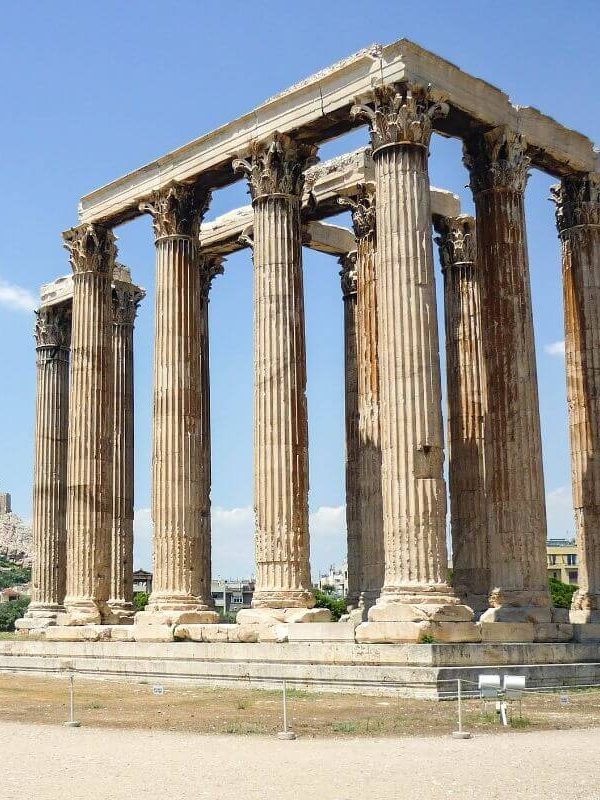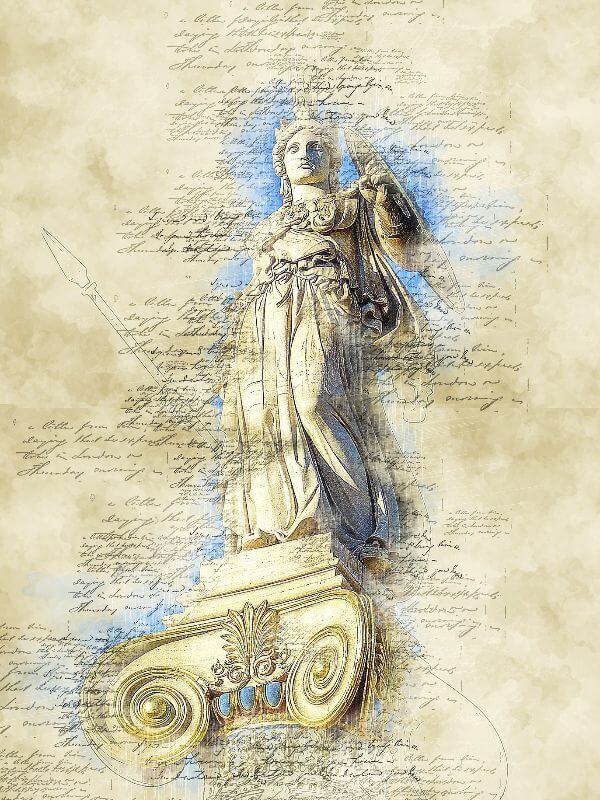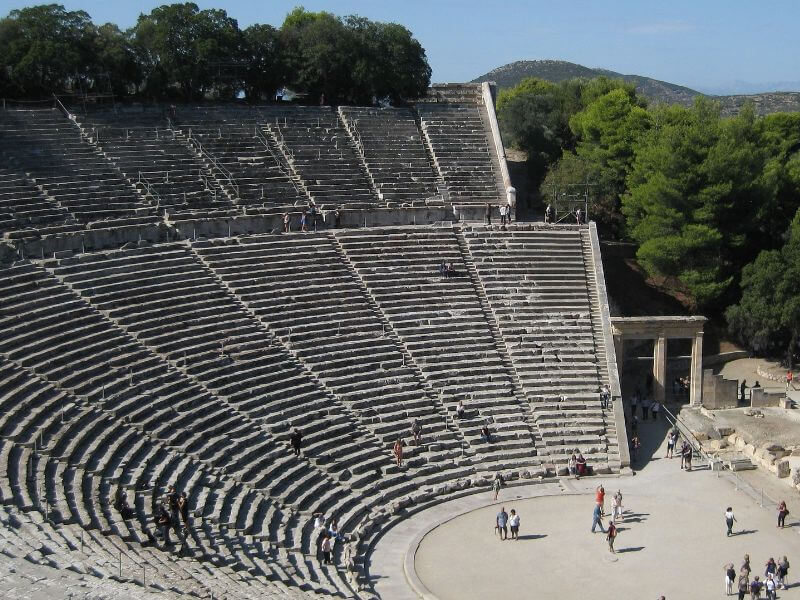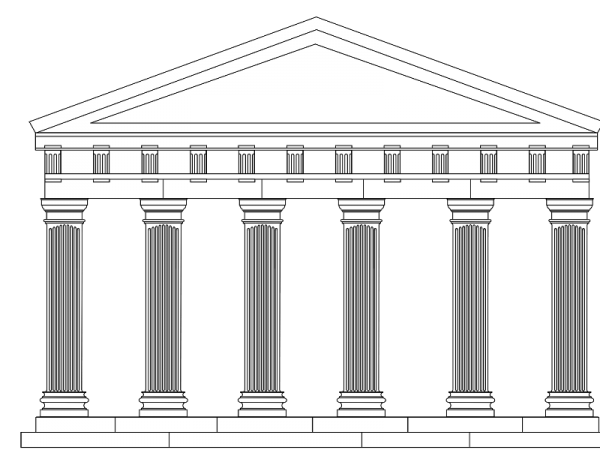Discover Greece Architecture
Greece Architecture
Did you know that Greece has some of the most iconic architecture in the world? From ancient temples like the Parthenon to stunning modern marvels, Greek architecture never ceases to amaze. In this article, we’ll take a closer look at the history, styles, and key features of Greece Architecture. Whether you’re planning your next vacation or just looking for some inspiration, our guide promises to delight and inform. (And who knows, maybe you’ll even learn something new!) So read on, fellow architect enthusiast!
Top landmarks of Greece Architecture
Discover Greece Architecture
The Greeks were known for their incredible achievements in science, philosophy, art, and architecture. In this article, I will take you on a journey through Greek architecture, exploring the different styles, elements, and famous examples of Ancient Greek buildings. We will delve into the history of Greek construction and discover how Greek architecture has influenced modern architecture.
Introduction to Ancient Greek Architecture
Ancient Greek architecture refers to the architectural styles and techniques that were used by the Ancient Greeks, from the Bronze Age to the Roman period. The Greeks were known for their love of beauty, harmony, and proportion. They believed that buildings should be functional, aesthetically pleasing, and reflect the ideals of their society.
Greek architecture was characterized by its use of columns, pediments, friezes, and other decorative elements. The Greeks also used a variety of building materials, including marble, limestone, and sandstone. They were skilled at carving, sculpting, and using color to create intricate designs and patterns.
History of Greek Construction
Greek construction can be traced back to the Bronze Age when the Cycladic civilization emerged on the Aegean Islands. The Cycladic people built simple structures using local materials such as stone and clay. These structures were rectangular and had flat roofs.
The Minoans, who lived on the island of Crete, were the next civilization to emerge. They built large palaces and temples with courtyards, columns, and frescoes. The Mycenaeans, who lived on the mainland, were known for their impressive fortifications and tombs. The Mycenaeans also built palaces and temples, some of which featured elaborate frescoes and gold ornaments.


How did Greek architecture influence the world?
The Different Styles of Greek Architecture
Greek architecture can be divided into several styles, each with its unique characteristics. The Cycladic style, which emerged in the Bronze Age, was characterized by its simple rectangular structures and flat roofs. The Minoan style, which emerged on the island of Crete, was characterized by its use of columns, frescoes, and complex floor plans.
The Mycenaean style, which emerged on the mainland, was characterized by its impressive fortifications and tombs. The Cretan style, which emerged in the Classical period, was characterized by its use of limestone and elaborate ornamentation. The Macedonian style, which emerged in the Hellenistic period, was characterized by its use of marble and elaborate decoration.
Finally, the Byzantine style, which emerged in the Byzantine Empire, was characterized by its use of domes, arches, and intricate mosaics.
Did you know ?
The greatness of ancient Greek architecture dates back to the archaic era (800-480 BC) and the classical era (479-323 BC), during which the high achievements of ancient Greek civilization were noted.
Elements of Greek Architecture
Greek architecture was characterized by a variety of elements, including temples, columns, arches, pediments, friezes, orders, capitals, cornices, and entablatures. Temples were the most important buildings in Ancient Greece and were used to worship the gods.
Columns were used to support the roof of the temple and were often decorated with intricate designs and patterns. The Greeks used three different orders of columns – the Doric, Ionic, and Corinthian – each with its unique characteristics.
Arches were used to span openings and support the weight of the structure above. Pediments were triangular structures that were used to decorate the top of the temple.
Friezes were decorative bands that were often used to depict scenes from Greek mythology. Orders were the different arrangements of columns and entablatures that were used in Greek architecture. Capitals were the decorative elements that were used to support the weight of the entablature.
Cornices were decorative elements that were used to hide the roofline of the temple. Entablatures were the horizontal structures that were used to support the roof of the temple.
Greek Sculpture
Greek sculpture was an integral part of Greek architecture and was used to decorate temples, tombs, and public spaces. The Greeks were known for their realistic depictions of the human form and their use of color and texture.
Pottery, vases, paintings, murals, mosaics, and reliefs were all used in Greek sculpture. Pottery was used for everyday objects such as cups and plates, while vases were used for decorative purposes.
Paintings, murals, and mosaics were used to decorate the walls of temples and public spaces. Reliefs were used to depict scenes from Greek mythology and were often used to decorate the pediments and friezes of temples.
Famous Examples of Ancient Greek Buildings
The Parthenon, located on the Acropolis in Athens, is perhaps the most famous example of Ancient Greek architecture. Built in the 5th century BC, the Parthenon was dedicated to the goddess Athena and was designed by the architect Ictinus.
The Acropolis, located in Athens, was a fortified citadel that was home to several temples and public buildings. The Temple of Olympian Zeus, located in Athens, was one of the largest temples in Ancient Greece and was dedicated to the god Zeus.

How Ancient Greek Architecture Influenced Modern Architecture
Ancient Greek architecture has had a profound influence on modern architecture. The use of columns, arches, and other decorative elements can be seen in buildings around the world. The neoclassical style, which emerged in the 18th century, was heavily influenced by Ancient Greek architecture. The neoclassical style was characterized by its use of columns, pediments, and other decorative elements, and was used to create many of the government buildings and museums in Europe and the United States.
Ancient Architects
The most important of the architects of the archaic and classical period are Iktinos, Kallikrates, Apollodorus of Damascus, Andronikos the Kyrrist, Dimokopos Myrillos, Aristainetos, Hippodamus Milesius and Ermogenys.
Based on the existing historical data, Kallikrates together with Iktinos were the two famous architects of the second half of the 5th century BC, of the “golden age of Pericles”. The temples and works they built were great in importance and perfection. We can divide the Greek architecture into four periods.

Kallikrates and Iktinos
Kallikrates, according to Plutarch, collaborated with Iktinos for the construction of the Parthenon, the most important ancient Greek temple. He also worked between 460 and 450 BC on the construction of the Long Walls and is also credited with other major works of ancient Athens such as the repair of part of the peripheral walls of the city, the reconstruction of a temple dedicated to Apteros Athena Nike on the Acropolis and perhaps of the Erechtheion.
Iktinos was a close friend of the great sculptor Pheidias. In addition to the construction of the Parthenon, Iktinos is credited with the construction of the temple of Epicurean Temple of Apollo at Bassae, as reported by Pausanias and the Temple of Demeter in Eleusis. Also, according to Vitruvius, Iktinos co-authored with Carpius the technical study “for the Doric temple of Athena in Athens”.
The two architects – and especially Iktinos – possessed very special knowledge that at that time was taught only in the Schools of Mysteries. Thus, it is believed that Iktinos and Kallikrates may have acquired this special knowledge of mathematics and astronomy. They were likely initiated into the Mysteries of Egypt, Greece or elsewhere, and then applied this secret, initiation, ancient knowledge to the construction of their temples. What is certain, however, is that the temples they built are made like a microscopic image of the perfect universe. In the same way, the culture of Egypt was the earthly image of heavenly Egypt, thus uniting visible and invisible with the construction of the Pyramids, which seem to bear similar signs of perfection to those of the Parthenon. For this reason, many ancients believed that the knowledge of the ancient Greeks about mathematics came from the knowledge of the Egyptians in this field. Specifically, Aristotle in his “Metaphysics” states: “Thus the science of mathematics came from neighboring Egypt because there the priestly class had this occupation.”
Ancient Greek Theater
The ancient Greek theater as an architecture is an outdoor amphitheater construction of a semicircular plan around a circular square. It was used for religious rituals, music and poetry competitions, theatrical performances, municipal or city-state assemblies and even as a market.
The parts of the Ancient Greek Theater
The main parts of the ancient Greek theater were the stage, the orchestra and the concave, with the following sub-parts:
The stage: rectangular, elongated building, added during the 5th c. BC on the periphery of the orchestra opposite the cavity. In the beginning it was ground floor and was used only as locker rooms, like today’s backstage and dressing rooms.
The foreground: a gallery with columns in front of the stage. Between the spaces of the columns were porters and paintings (the sets). The doors of the foreground yielded three gates, from which the hypocrites came out. The foreground was initially collapsible, probably wooden.
The backstage: the two ends of the scene that protrude giving it a P shape in the floor plan.
The lanes: the corridors to the right and left of the stage leading to the orchestra. They were usually covered with arches.
The orchestra: The semicircular (or circular, eg Epidaurus) square in the center of the theater. Usually paved. There was dancing.
The hollow: the whole amphitheater (with the seats, the stairs and the moldings) around the orchestra, where the spectators sat.
The cornices: horizontal corridors that divide the seats of the spectators into horizontal zones.
The stands: groups of seats in wedge-shaped sections created by the separation of the zones with the stairs.
The seats: the seats, the seats of the spectators.
Presidency: the first row of seats, where the officials were sitting
The Cretan civilization (Minoan, 1800-1300 BC)
This is one of the earliest known architectural periods of ancient Greece. The most famous site of this period is the huge Palace and residential complexes of Knossos, in the isle of Crete. This imposing palace is built on a hill, in a site admired for its natural advantages, with access to the sea and proximity to a large forest full of Cephalonian pines, trees that were used for the construction of the columns and the beams of the Palace. All around the Palace you can see a lot of residential buildings like the “Little Palace”, the “Royal Villa” and the “South House”, forming the large city of Knossos, the city with a population not less than 100 000 inhabitants. The central court divides the Palace of Knossos into the West wing where you can visit today the religious and official staterooms, and the East wing which was used for domestic and workshop purposes. The Palace was destroyed around 1450 BC by the volcanic eruption of Santorini.
The Mycenaean (Achaean) civilization (1300-1000 BC)
The Mycenaean period is the period following the Minoan period. Leaving behind the open, labyrinthine palaces built by the Minoans, the Mycenaean formed a different style: citadels built on a compact, orderly plan and fortified by strong walls. One of the most important remains of Mycenaean architecture was found by the archaeologist Heinrich Schliemann in the 1870s and is located in the Peloponnese, in the ancient city-states of Mycenae and Tiryns. The primary remains you’re going to find at Mycenae are walls and tombs because the palace itself has been destroyed. Because of that, a strange atmosphere of death reign in this site, atmosphere, mostly due to the mythological stories connected to this place. Here was the supposed location of the House of Atreus, who fed his brother, Thyestes, his children for dinner, in the last attempt of a dynastic struggle.
Therefore the next generation descending from Atreus will be cursed until the last one. The king Agamemnon will sacrifice his daughter, Iphigenia, to ask the gods for favorable winds that will help the Greeks to go to fight against Troy. Returning from this devastating war, Agamemnon will be killed by his wife Clytemnestra, who will, in her turn, be killed by her children, Orestes and Electra. The famous Lion Gate at the palace of Mycenae as well as the galleries of the palace at Tiryns shows the amazing engineering expertise of the Mycenaean civilization.
Archaic and Classical Greek architecture
The great advance in Ancient Greek architecture is visible by the construction of the first monumental stone temples from the Archaic and Classical periods. Those temples are characterized by the famous order of Doric, Ionic, and Corinthian style.
Ancient Architects
The most important of the architects of the archaic and classical period are Iktinos, Kallikrates, Apollodorus of Damascus, Andronikos the Kyrrist, Dimokopos Myrillos, Aristainetos, Hippodamus Milesius and Ermogenys.
Based on the existing historical data, Kallikrates together with Iktinos were the two famous architects of the second half of the 5th century BC, of the “golden age of Pericles”. The temples and works they built were great in importance and perfection. We can divide the Greek architecture into four periods.
Kallikrates and Iktinos
Kallikrates, according to Plutarch, collaborated with Iktinos for the construction of the Parthenon, the most important ancient Greek temple. He also worked between 460 and 450 BC on the construction of the Long Walls and is also credited with other major works of ancient Athens such as the repair of part of the peripheral walls of the city, the reconstruction of a temple dedicated to Apteros Athena Nike on the Acropolis and perhaps of the Erechtheion.
Iktinos was a close friend of the great sculptor Pheidias. In addition to the construction of the Parthenon, Iktinos is credited with the construction of the temple of Epicurean Temple of Apollo at Bassae, as reported by Pausanias and the Temple of Demeter in Eleusis. Also, according to Vitruvius, Iktinos co-authored with Carpius the technical study “for the Doric temple of Athena in Athens”.
The two architects – and especially Iktinos – possessed very special knowledge that at that time was taught only in the Schools of Mysteries. Thus, it is believed that Iktinos and Kallikrates may have acquired this special knowledge of mathematics and astronomy. They were likely initiated into the Mysteries of Egypt, Greece or elsewhere, and then applied this secret, initiation, ancient knowledge to the construction of their temples. What is certain, however, is that the temples they built are made like a microscopic image of the perfect universe. In the same way, the culture of Egypt was the earthly image of heavenly Egypt, thus uniting visible and invisible with the construction of the Pyramids, which seem to bear similar signs of perfection to those of the Parthenon. For this reason, many ancients believed that the knowledge of the ancient Greeks about mathematics came from the knowledge of the Egyptians in this field. Specifically, Aristotle in his “Metaphysics” states: “Thus the science of mathematics came from neighboring Egypt because there the priestly class had this occupation.”
Ancient Greek Theater
The ancient Greek theater as an architecture is an outdoor amphitheater construction of a semicircular plan around a circular square. It was used for religious rituals, music and poetry competitions, theatrical performances, municipal or city-state assemblies and even as a market.
The parts of the Ancient Greek Theater
The main parts of the ancient Greek theater were the stage, the orchestra and the concave, with the following sub-parts:
The stage: rectangular, elongated building, added during the 5th c. BC on the periphery of the orchestra opposite the cavity. In the beginning it was ground floor and was used only as locker rooms, like today’s backstage and dressing rooms.
The foreground: a gallery with columns in front of the stage. Between the spaces of the columns were porters and paintings (the sets). The doors of the foreground yielded three gates, from which the hypocrites came out. The foreground was initially collapsible, probably wooden.
The backstage: the two ends of the scene that protrude giving it a P shape in the floor plan.
The lanes: the corridors to the right and left of the stage leading to the orchestra. They were usually covered with arches.
The orchestra: The semicircular (or circular, eg Epidaurus) square in the center of the theater. Usually paved. There was dancing.
The hollow: the whole amphitheater (with the seats, the stairs and the moldings) around the orchestra, where the spectators sat.
The cornices: horizontal corridors that divide the seats of the spectators into horizontal zones.
The stands: groups of seats in wedge-shaped sections created by the separation of the zones with the stairs.
The seats: the seats, the seats of the spectators.
Presidency: the first row of seats, where the officials were sitting
The Cretan civilization (Minoan, 1800-1300 BC)
This is one of the earliest known architectural periods of ancient Greece. The most famous site of this period is the huge Palace and residential complexes of Knossos, in the isle of Crete. This imposing palace is built on a hill, in a site admired for its natural advantages, with access to the sea and proximity to a large forest full of Cephalonian pines, trees that were used for the construction of the columns and the beams of the Palace. All around the Palace you can see a lot of residential buildings like the “Little Palace”, the “Royal Villa” and the “South House”, forming the large city of Knossos, the city with a population not less than 100 000 inhabitants. The central court divides the Palace of Knossos into the West wing where you can visit today the religious and official staterooms, and the East wing which was used for domestic and workshop purposes. The Palace was destroyed around 1450 BC by the volcanic eruption of Santorini.
The Mycenaean (Achaean) civilization (1300-1000 BC)
The Mycenaean period is the period following the Minoan period. Leaving behind the open, labyrinthine palaces built by the Minoans, the Mycenaean formed a different style: citadels built on a compact, orderly plan and fortified by strong walls. One of the most important remains of Mycenaean architecture was found by the archaeologist Heinrich Schliemann in the 1870s and is located in the Peloponnese, in the ancient city-states of Mycenae and Tiryns. The primary remains you’re going to find at Mycenae are walls and tombs because the palace itself has been destroyed. Because of that, a strange atmosphere of death reign in this site, atmosphere, mostly due to the mythological stories connected to this place. Here was the supposed location of the House of Atreus, who fed his brother, Thyestes, his children for dinner, in the last attempt of a dynastic struggle.
Therefore the next generation descending from Atreus will be cursed until the last one. The king Agamemnon will sacrifice his daughter, Iphigenia, to ask the gods for favorable winds that will help the Greeks to go to fight against Troy. Returning from this devastating war, Agamemnon will be killed by his wife Clytemnestra, who will, in her turn, be killed by her children, Orestes and Electra. The famous Lion Gate at the palace of Mycenae as well as the galleries of the palace at Tiryns shows the amazing engineering expertise of the Mycenaean civilization.
Archaic and Classical Greek architecture
The great advance in Ancient Greek architecture is visible by the construction of the first monumental stone temples from the Archaic and Classical periods. Those temples are characterized by the famous order of Doric, Ionic, and Corinthian style.
The Doric order
From an architecture point of view, the greatest monument that was ever built in Athens is the famous Acropolis with its central temple, the Parthenon, a brilliant Doric temple. This temple has the reputation of the most perfect Doric temple ever built. It was built in 477-438 BC by Ictinus and Callicrates, with the collaboration of Phidias. The temple stands on the conventional three steps and has a cell with two rooms with hexastyle prostyle porches. When it was first built you could find, inside the colonnades, the fabulous work of Phidias, the gold and ivory statue of Athena Parthenos, representing the goddess Athena with her spear, helmet and aegis, a snake around her and holding the statue of victory. The ceiling of the temple was supposed to be made of wood, covered with painted decoration. In the late sixth century, the Parthenon was converted into a Christian church and in 1458 it was used by the Turks to serve as a mosque. Most of the damage to the different temples forming the Acropolis is due to an Italian attack against the Turks. Another important Doric example is the Temple of Hera in Olympia, built in the 6th century BC. It is a peripteral temple situated toward the northwest corner of the Sanctuary of Zeus, east of Philippeion and north of the Temple of Zeus. The temple has a total of 14 Doric columns, creating two narrow side aisles, in front of the north and south walls. The Temple of Hera is also named Heraion and is the earliest monumental temple in Greece.
The Ionic order
Unlike the austere Doric style, the Ionic column has an ornamented necking, a base in several tiers, and has more flutes. This order is much less massive than the Doric style and generally more graceful. The Ionic style is well illustrated in Athens Architecture of the beautiful Temple of Athena Nike (goddess of Victory), built by Callicrates around 420 BC, beside the gateway to the Acropolis. It is the earliest Ionic temple built on the Acropolis. Quite small, it has four columns at each end of the projecting porches. The Erechtheion, opposite the Parthenon, is another famous example of the Ionic style. One of its ends was dedicated to Athena Polias and its altars built in honor of Poseidon-Herechtheus and Hephaestus. It is in this temple where you can admire the famous Porch of the Caryatid (the Maidens); which is a pro-style tetrastyle porch with a roof supported by six beautiful Caryatid statues.

The Corinthian order
This order appeared at the end of the classical period and was used a lot by the Romans to build their proper constructions. The Temple of Olympian Zeus in Athens is an excellent example of a Corinthian temple. It was an enormous structure, even exceeding in size the Temple of the Parthenon. It had 104 columns made of Pentelic marble and each of those columns were 17 meters high. Today, only 15 of these Corinthian columns are still standing in the middle of the Olympic where stood one of the Seven Wonders of the World, the huge gold statue of Zeus.
The classical period is also the period during which all the wonderful theatres you can discover in Greece were built. The great plays of Aeschylus, Sophocles, Euripides, and Aristophanes were all performed in those architectural wonders, but first of all in the little Theatre of Dionysos (built in the slope of Acropolis in the 5th century BC), actually standing behind the theatre of Herodes Atticus.
Athens also has remains of this period with, for the best example, the Roman Agora, built in the time of Augustus and standing at the bottom of the Acropolis. A century and a half later, the emperor Hadrian built the famous Arch of Hadrian that still stands in the center of Athens. The Byzantine period explains the incredible amount of lovely and heavy decorated churches that decorate the city.
After the War of Independence, during the monarchy, Athens is embellished by buildings in neoclassical style like the National Library and the Athens University in Panepistimiou avenue, the majestic Parliament, and some hotels and museums.
The influence of the Byzantine Empire
The architecture of the early Christian period, that is, the period that begins with the recognition of Christianity as an official religion by Constantine the Great (313) and that ends with the Arab conquest of the southern provinces of the empire. At this time the art of the Greco-Roman world continues and expands, whose monumental forms are now used to meet the needs of the new official religion. The significance of this era for the history of medieval art is enormous.
The vast territory of the empire includes the thriving Hellenistic cities with strong domestic artistic traditions, such as Alexandria, Antioch, Ephesus, Rome, and the capital Constantinople, which is constantly enriched with new ecclesiastical and imperial buildings. The type of church that dominates until the 6th century is the basilica, which originates from a spacious Hellenistic and Roman building for public gatherings.
The rich interior decoration, colorful marbles, mosaics, gilded ceiling, show the effort to give to the bright space, which covers the walls and the floor valuable materials, all with colorful reflections, all set in the luxury scale.
FREQUENTLY ASKED QUESTIONS
Greek architecture is a style of architecture that flourished in ancient Greece from around the 8th century BC to the 1st century AD. It is characterized by its simplicity, harmony, and mathematical precision. The main features of Greek architecture include the use of columns, pediments, friezes, and symmetry.
The three most important things to know about Greek architecture are:
The Greeks believed that beauty was an essential part of architecture, and they sought to create buildings that were not only functional but also aesthetically pleasing.
Greek architecture had a profound influence on the development of Western architecture, and many of its features can still be seen in buildings today.
The three orders of Greek architecture are Doric, Ionic, and Corinthian, each with its own distinct characteristics and details.
The main types of Greek architecture are temples, public buildings, and private dwellings. Temples were the most prominent type of Greek architecture, and they were used for religious purposes. Public buildings included marketplaces, amphitheaters, and public baths, while private dwellings ranged from small houses to elaborate mansions.
The three most important things to know about the main types of Greek architecture are:
Temples were designed to be seen from a distance and were typically built on high ground. They featured a rectangular floor plan with a portico and columns on all sides, and a pediment at each end.
Public buildings were often constructed in the center of towns and cities, and they were designed to be functional and practical. They typically featured large open spaces and were constructed using local materials.
Private dwellings varied widely in size and style, depending on the wealth and social status of the owner. Some were simple and functional, while others were elaborate and ornate.
Greek temple architecture is characterized by its use of columns, pediments, and friezes. The temples were designed to be visually appealing and were often built on high ground to be seen from a distance. The most famous example of Greek temple architecture is the Parthenon in Athens.
The three most important things to know about the characteristics of Greek temple architecture are:
Greek temples were typically rectangular in shape and featured a portico with columns on all sides. The columns were used to support the roof, and they were either Doric, Ionic, or Corinthian in style.
The pediments at each end of the temple were often decorated with sculptures or reliefs, and they were used to depict scenes from Greek mythology.
The frieze around the top of the temple was often decorated with relief sculptures, and it was used to depict a continuous narrative or theme.
The Acropolis in Athens is a hill that was home to several important temples and other buildings in ancient Greece. It was considered the most important religious and cultural center in Athens, and it is now a UNESCO World Heritage Site.
The three most important things to know about the significance of the Acropolis in Athens are:
The most famous building on the Acropolis is the Parthenon, which was built in the 5th century BC and is considered one of the greatest examples of Greek architecture. It was dedicated to the goddess Athena and was used as a temple.
The Acropolis was also home to other important buildings, including the Erechtheion and the Propylaea. These buildings were also used for religious and civic purposes.
The Acropolis was destroyed by the Persians in 480 BC.
Greek architecture has been influential throughout history, and some of the most iconic examples include the Parthenon in Athens, the Temple of Olympian Zeus, the Temple of Hephaestus, and the ancient theater at Epidaurus.
The Parthenon is one of the most important examples of Greek architecture and is located on the Acropolis in Athens. It was built in the 5th century BC as a temple to the goddess Athena, and it has since become a symbol of ancient Greek civilization. The Parthenon features Doric columns, a pediment, and metopes depicting scenes from Greek mythology.
Greek architecture has had a significant impact on modern design, particularly in the fields of architecture and art. Its emphasis on proportion, symmetry, and simplicity has influenced countless architects throughout history. The use of columns and other classical elements can be seen in buildings around the world, from the White House in Washington, D.C., to St. Peter's Basilica in Rome. Greek motifs and designs are also frequently used in art and fashion.
What we Do
Our Services
Cheap flights with cashback
Plan and book your trip in one app: get alerts when prices go down, receive up to 15% cashback.
Train Travel
Greece Itinerary - The Best of Greece by Rail
Bikes
Rent a motorcycle, scooter or bicycle in any part of the world
ferries in greece
FerriesinGreece is one of the best and top-rated online booking engines for ferry tickets to Greece (from Italy) and the Greek Islands.
HIstory Travel
Ancient Greece Tours: Greek History Tours
Car rentals
Car Hire in Greece. Complete the search form to find cheap car hire in Greece. Let’s find your ideal car.
VISITOR FEEDBACK
- Discover the best hotels in Greece, from luxury beachfront accommodations to budget-friendly options with stunning views.
- Experience the ultimate luxury vacation in Greece with our top-rated hotel recommendations, featuring spa treatments and picturesque locations.



